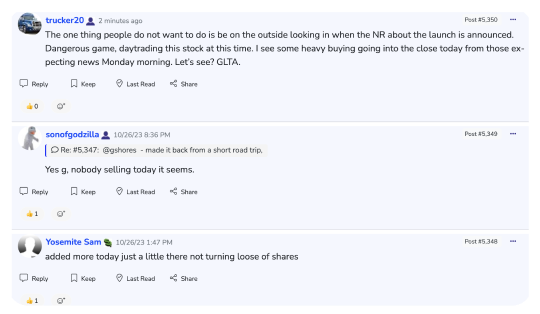Wednesday, February 16, 2005 11:29:28 AM
Matthew Fordahl
Associated Press
Feb. 16, 2005 08:28 AM
SANTA CLARA, Calif. - In an advance that could drive down the cost of optical networks and help make fiber as common as copper wires, Intel Corp. researchers have built a continuously shining laser with the same material - silicon - that's the foundation of today's chip industry.
The technology's implications could be enormous, researchers said. It not only could be used to make high-bandwidth, light-based communications inexpensive enough to be used within computers, but also reduce the cost of lasers used in medicine, defense and other industries.
Just a few years ago, few experts thought silicon could be used to build a laser, said Mario Paniccia, director of Intel's photonics lab. After all, it tends to absorb light energy, dissipating it as heat rather than amplifying it like lasers built with more exotic materials. advertisement
"This is a fundamental breakthrough," said Paniccia, a co-author of the Intel study, which was to be published in the journal Nature on Thursday. "It's one of those things that's a game changer. You're doing something in silicon that couldn't be done before."
If the research continues on track, it's expected that the devices could be made in the same factories now used to build microprocessor and memory chips. If so, it could help companies like Intel further leverage their multibillion-dollar manufacturing investments.
Laser beams are usually created by using a blast of electricity or light to boost the energy levels of electrons in atoms of polished crystal rods, semiconductors, gases or vapors. Then the electrons fall back, and photons, the basic element of light, are released. The photons are then bounced back and forth before they're beamed out as concentrated light.
The basic process doesn't work with silicon because of its physical qualities. Instead, researchers focused on a weak but precise scattering of protons called the Raman effect, which occurs when silicon is stimulated by a light source.
It turns out silicon is a good material for Raman lasers, which are already being used in the fiber of long-haul telecommunications networks. Previous research found that with silicon, the effect is 10,000 times stronger than in the glass fiber. That means the effect is stronger at shorter distances.
The paper published Thursday is the second in less than a month from Intel researchers. In January, they announced that they had built an all-silicon laser, by etching channels into silicon that amplify pumped-in light. But there was a problem: after a period of time, the laser beam stopped. Researchers worked around the problem by developing a pulsed laser - and the pulsing unfortunately made it impractical for most uses.
"Basically, it's a show stopper," Paniccia said.
Further study revealed that the light pumped into the laser cavity was dislodging electrons that were then absorbing energy. Taking advantage of silicon's electrical properties, they built a tiny component into the silicon that sweeps away the electrons when voltage is applied.
"That was a major remaining milestone for these lasers," said Bahram Jalali, a University of California, Los Angeles electrical engineering professor who was not involved in the Intel research.
The UCLA team first suggested using the Raman effect for silicon lasers in 2002 and last year reported the first silicon laser. Last week, Jalali and a colleague published a paper in the journal Optics Express that showed the same component used by Intel to sweep away electrons can be used to encode light with data by pumping them in.
But Jalali calls Intel's laser more significant because it cleared a major technical hurdle and enables practical uses of the technology. And, like his team's research, it combines both the new optical capabilities and silicon's well-known electrical characteristics.
"That's what you need to do if you want to integrate everything on the same chip with electronic circuitry," Jalali said.
Paniccia sees the lasers - as well as the external silicon optical modulator his lab developed a year ago - as building blocks. The lab also is working on ways to package the devices so that they can be used with existing technology.
"Think of them as Legos," Paniccia said. "I can mix and match, put them together, depending on the application."
Recent INTC News
- U.S. Stocks Rally On Upbeat Tech Earnings • IH Market News • 04/26/2024 08:30:27 PM
- Exxon Mobil Net Profit Drops 28% to $8.22 Billion, Atlassian Surprises with Revenue Boost and Co-CEO Exit, and More in Earnings • IH Market News • 04/26/2024 11:47:51 AM
- U.S. Stocks Climb Well Off Worst Levels But Close Mostly Lower • IH Market News • 04/25/2024 08:40:00 PM
- Intel Reports First-Quarter 2024 Financial Results • Business Wire • 04/25/2024 08:01:00 PM
- U.S. Futures Drop in Pre-Market Trading as Tech Stocks Plunge After Meta Issues Gloomy Forecast • IH Market News • 04/25/2024 11:53:54 AM
- BHP Bids $38.8 Billion for Anglo American; Biden Unveils Historic Micron Technology Deal, and More News • IH Market News • 04/25/2024 11:48:40 AM
- Futures Pointing To Extended Rebound On Wall Street • IH Market News • 04/23/2024 01:11:27 PM
- U.S. Stocks Close On Bright Note Despite Coming Off Day’s Highs • IH Market News • 04/22/2024 08:38:04 PM
- Nasdaq, S&P 500 Extend Losing Streaks On Tech Weakness But Dow Advances • IH Market News • 04/19/2024 08:32:14 PM
- Paramount’s Shares Surge Following Sony and Apollo’s Joint Bid; ISS Backs Berkshire Hathaway Director Re-election, and More • IH Market News • 04/19/2024 11:31:22 AM
- Intel Builds World’s Largest Neuromorphic System to Enable More Sustainable AI • Business Wire • 04/17/2024 04:22:00 PM
- United Shares Surge 5.3% in Q1 2024 Earnings Beat; Take-Two Cuts 5% of Workforce, and More News • IH Market News • 04/17/2024 10:57:39 AM
- Intel Brings AI-Platform Innovation to Life at the Olympic Games • Business Wire • 04/17/2024 08:00:00 AM
- Samsung Surpasses Apple in Q1 Smartphone Market; Salesforce in Talks to Acquire Informatica, and More News • IH Market News • 04/15/2024 11:06:48 AM
- Paramount Global Board Shrinks, Morgan Stanley Faces Regulatory Probe, and More News • IH Market News • 04/12/2024 11:05:29 AM
- Delta Generates US$37 Million Profit in Q1, Google and Intel Unveil Cutting-Edge AI Chips, and More News • IH Market News • 04/10/2024 11:13:48 AM
- Intel Unleashes Enterprise AI with Gaudi 3, AI Open Systems Strategy and New Customer Wins • Business Wire • 04/09/2024 03:35:00 PM
- Bigger Than Expected Increase In Jobless Claims May Generate Buying Interest • IH Market News • 04/04/2024 01:05:37 PM
- US Index Futures Rise, Oil Dips Slightly • IH Market News • 04/04/2024 11:31:45 AM
- Intel to Report First-Quarter 2024 Financial Results • Business Wire • 04/03/2024 08:30:00 PM
- Major Averages Fluctuate Before Closing Narrowly Mixed • IH Market News • 04/03/2024 08:26:25 PM
- Futures Pointing To Continued Weakness On Wall Street • IH Market News • 04/03/2024 01:06:44 PM
- Cal-Maine Surges on Strong Quarterly Performance, Taiwan Earthquake Disrupts Tech Supply Chain, and More • IH Market News • 04/03/2024 11:12:20 AM
- Intel Outlines Financial Framework for Foundry Business, Sets Path to Margin Expansion • Business Wire • 04/02/2024 08:05:00 PM
- Opinion: How Intel is Refining Its Approach to Responsible AI • Business Wire • 04/02/2024 01:00:00 PM
Bantec Reports an Over 50 Percent Increase in Sales and Profits in Q1 2024 from Q1 2023 • BANT • Apr 25, 2024 10:00 AM
Cannabix's Breath Logix Alcohol Device Delivers Positive Impact to Private Monitoring Agency in Montana, USA • BLO • Apr 25, 2024 8:52 AM
Kona Gold Beverages, Inc. Announces Name Change to NuVibe, Inc. and Initiation of Ticker Symbol Application Process • KGKG • Apr 25, 2024 8:30 AM
Axis Technologies Group and Carbonis Forge Ahead with New Digital Carbon Credit Technology • AXTG • Apr 24, 2024 3:00 AM
North Bay Resources Announces Successful Equipment Test at Bishop Gold Mill, Inyo County, California • NBRI • Apr 23, 2024 9:41 AM
Epazz, Inc.: CryObo, Inc. solar Bitcoin operations will issue tokens • EPAZ • Apr 23, 2024 9:20 AM










